Intel Xeon Gold 6240R Performance
For this exercise, we are using our legacy Linux-Bench scripts which help us see cross-platform “least common denominator” results we have been using for years as well as several results from our updated Linux-Bench2 scripts. Starting with our 2nd Generation Intel Xeon Scalable refresh benchmarks, we are adding a number of our workload testing features to the mix as the next evolution of our platform.
At this point, our benchmarking sessions take days to run and we are generating well over a thousand data points. We are also running workloads for software companies that want to see how their software works on the latest hardware. As a result, this is a small sample of the data we are collecting and can share publicly. Our position is always that we are happy to provide some free data but we also have services to let companies run their own workloads in our lab, such as with our DemoEval service. What we do provide is an extremely controlled environment where we know every step is exactly the same and each run is done in a real-world data center, not a test bench.
We are going to show off a few results, and highlight a number of interesting data points in this article.
Python Linux 4.4.2 Kernel Compile Benchmark
This is one of the most requested benchmarks for STH over the past few years. The task was simple, we have a standard configuration file, the Linux 4.4.2 kernel from kernel.org, and make the standard auto-generated configuration utilizing every thread in the system. We are expressing results in terms of compiles per hour to make the results easier to read:
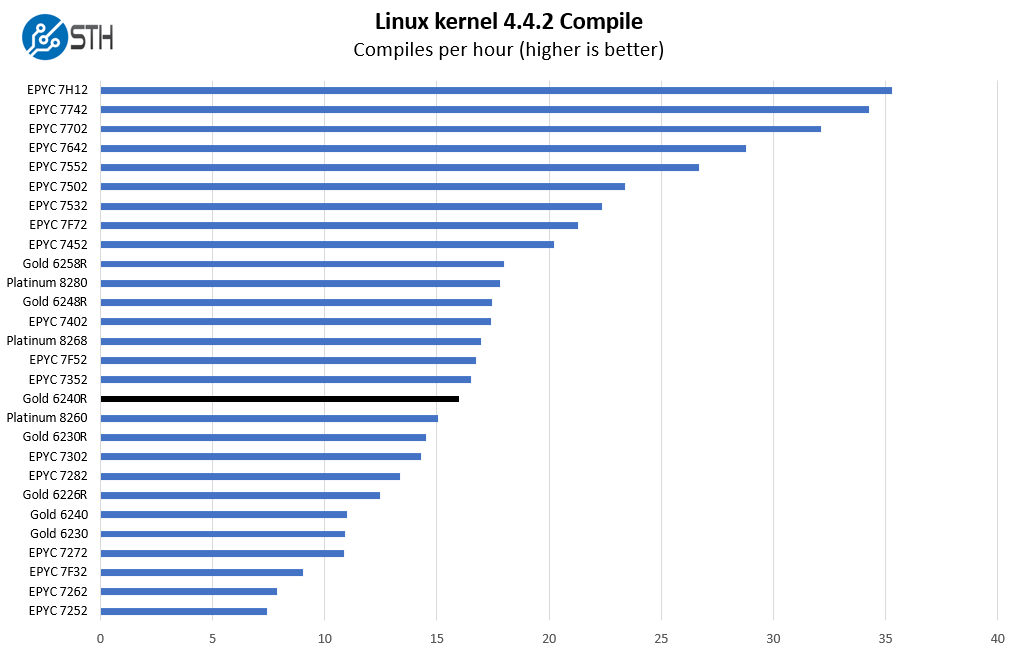
Setting the stage here, we are going to have a number of benchmark results with a core set and then varying a few interesting data points into the mix. This is the Intel Xeon Gold 6240R in the context of virtually the entire public AMD EPYC 7002 series dual-socket capable stack and is the first review we are slipping a few of the AMD EPYC 7H12 numbers into. Expect a review on that one soon. We also have a number of Intel Xeon offerings including adjacent SKUs and both refresh and pre-refresh parts.
c-ray 1.1 Performance
We have been using c-ray for our performance testing for years now. It is a ray tracing benchmark that is extremely popular to show differences in processors under multi-threaded workloads. We are going to use our 8K results which work well at this end of the performance spectrum.
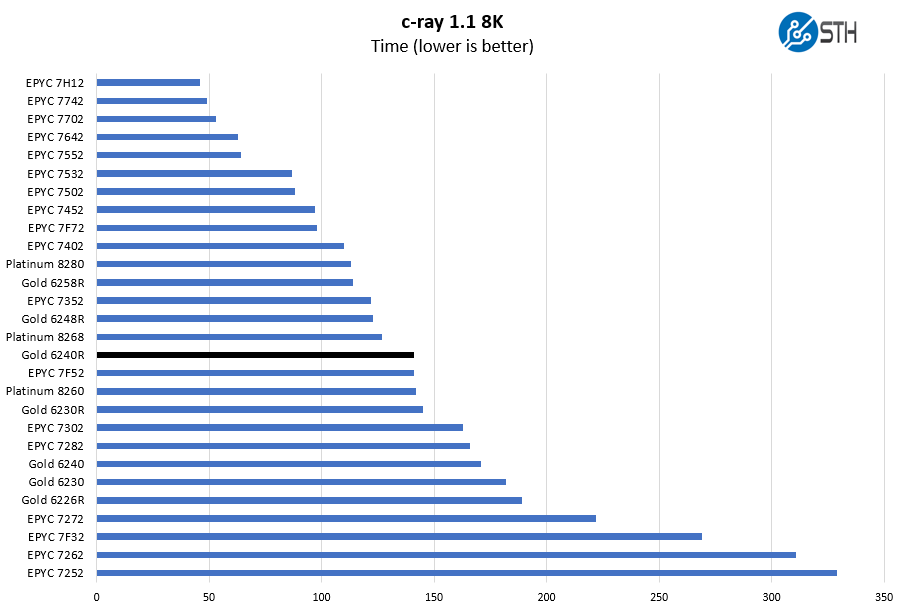
This is a benchmark that we started to use several years ago. There are architectural reasons the AMD Zen and Zen 2 chips perform extremely well here. Instead of looking at AMD versus Intel, it is best to look at Intel v. Intel here. There are a number of tests where the Intel Xeon Gold 6240R is able to slightly edge-out the Intel Xeon Platinum 8260. We generally expect their performance to be close given specs.
7-zip Compression Performance
7-zip is a widely used compression/ decompression program that works cross-platform. We started using the program during our early days with Windows testing. It is now part of Linux-Bench.
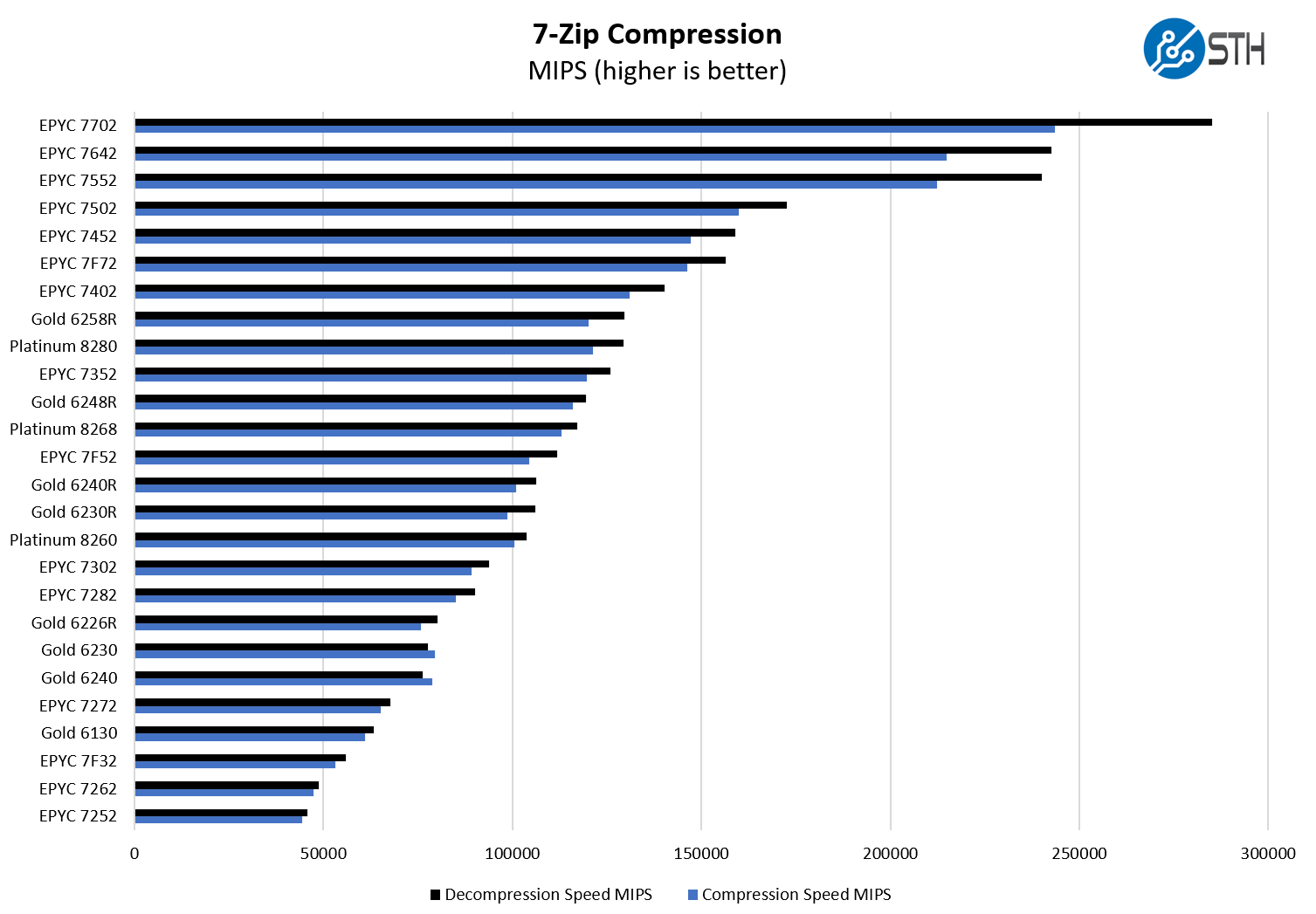
Another storyline worth tracking here is the difference between the Gold 6240R and the Gold 6230R. We have not released our Gold 6230R review yet, however, it is a unique 26 core part. While the Gold 6230R has 26 cores, they are generally hitting lower clock speeds which means we often see the 24-core Gold 6240R perform better.
NAMD Performance
NAMD is a molecular modeling benchmark developed by the Theoretical and Computational Biophysics Group in the Beckman Institute for Advanced Science and Technology at the University of Illinois at Urbana-Champaign. More information on the benchmark can be found here. With GROMACS we have been working hard to support AVX-512 and AVX2 architectures. Here are the comparison results for the legacy data set:
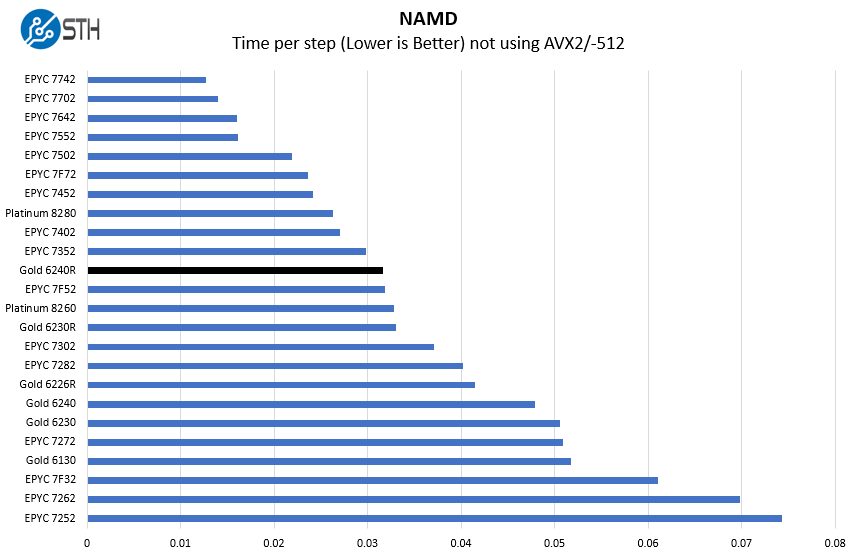
Here we see the Xeon Gold 6240R slightly out-pace the AMD EPYC 7F52 frequency optimized part. The EPYC 7F52 is a 16-core part so this shows that 24 Intel Xeon cores even at a more mundane clock speed, can be competitive with 24 Intel Xeon cores. We can also see a substantial performance bump over the Intel Xeon Gold 6240. The model names may be similar, but the performance profiles and resources are very different.
OpenSSL Performance
OpenSSL is widely used to secure communications between servers. This is an important protocol in many server stacks. We first look at our sign tests:
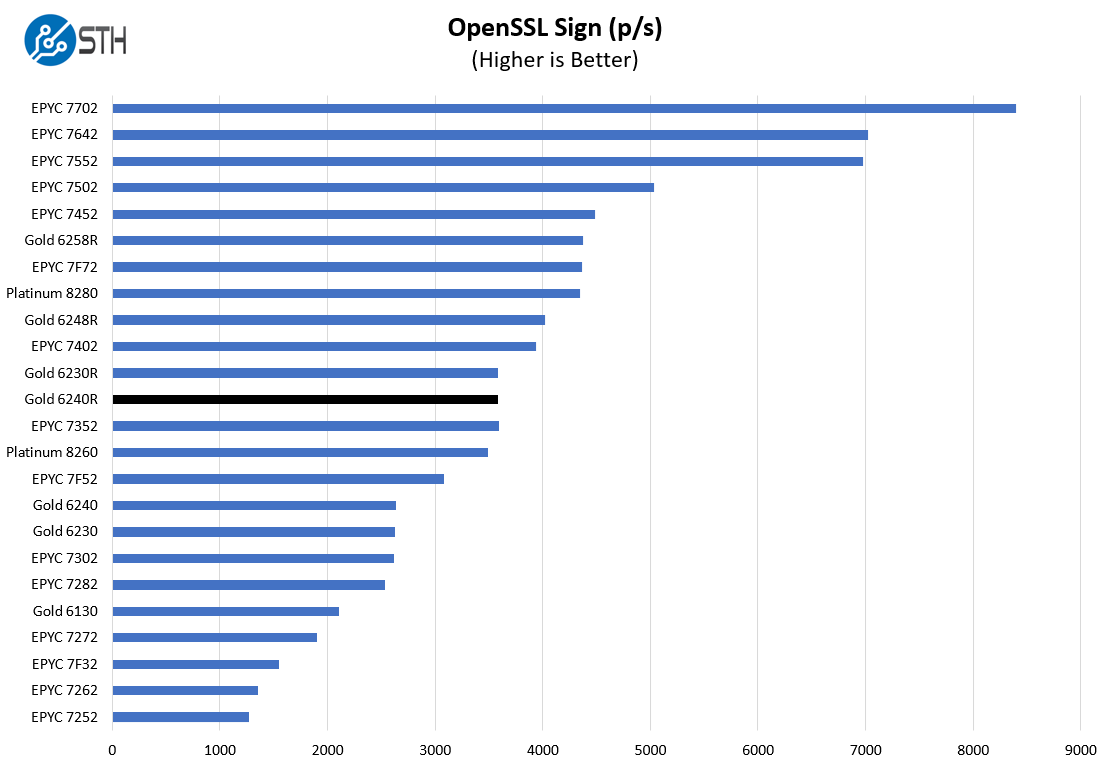
Here are the verify results:
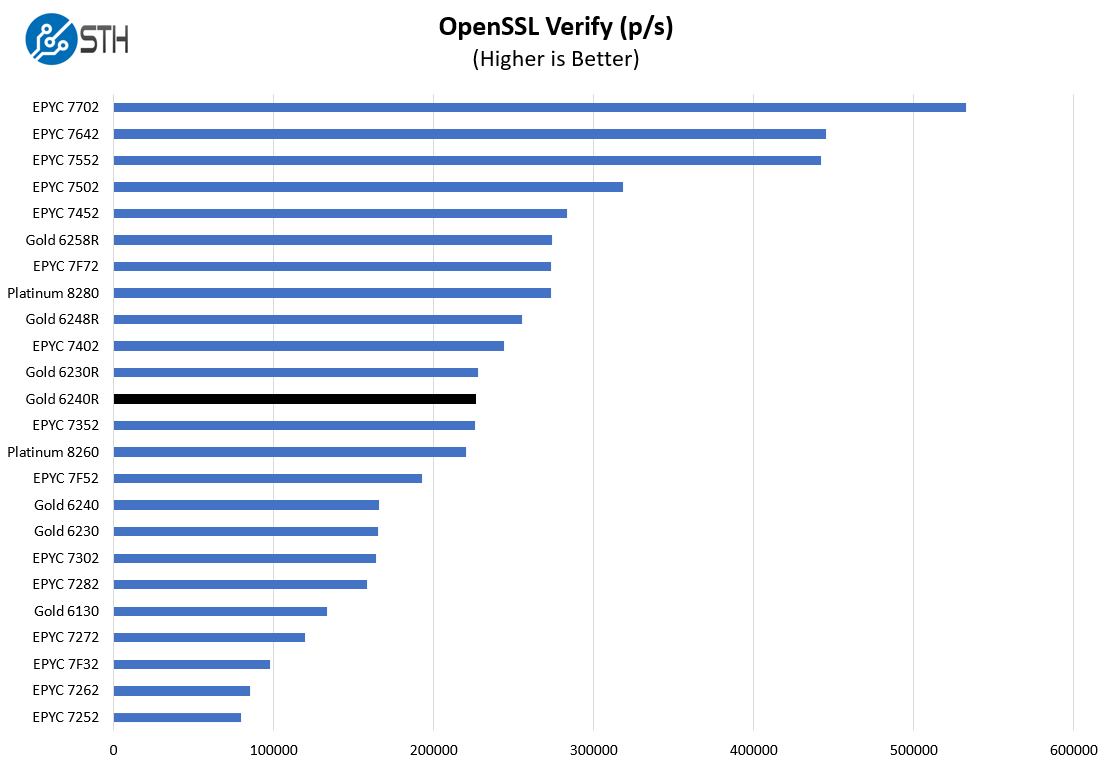
This is a workload that Intel may argue can be offloaded to QAT accelerators. Still, it shows something very interesting in that it is one of the few instances where we see the two extra cores of the Gold 6230R lead to more performance. In reality, our results were within a margin of error between the two but it is a good core v. clock speed trade-off example.
UnixBench Dhrystone 2 and Whetstone Benchmarks
Some of the longest-running tests at STH are the venerable UnixBench 5.1.3 Dhrystone 2 and Whetstone results. They are certainly aging, however, we constantly get requests for them, and many angry notes when we leave them out. UnixBench is widely used so we are including it in this data set. Here are the Dhrystone 2 results:
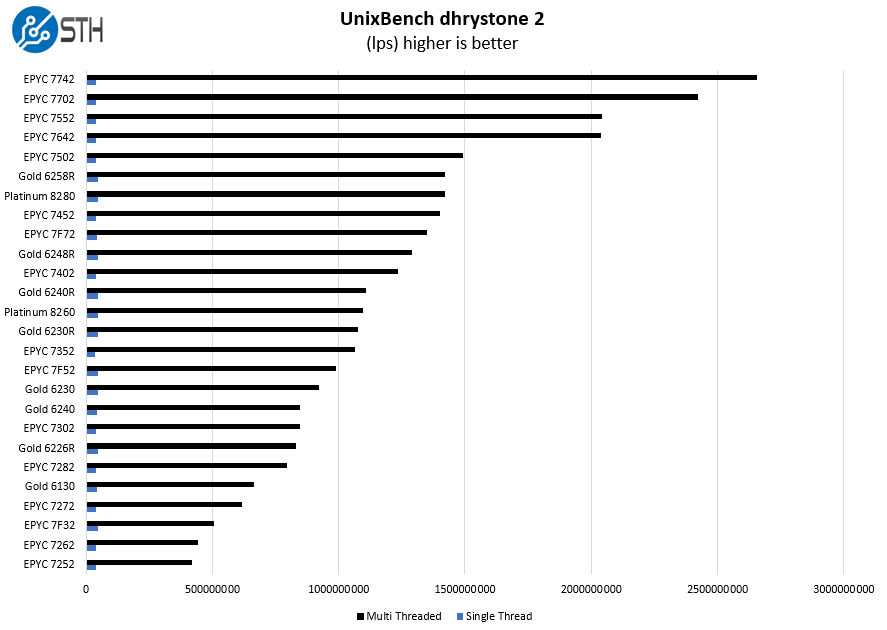
Here are the whetstone results:
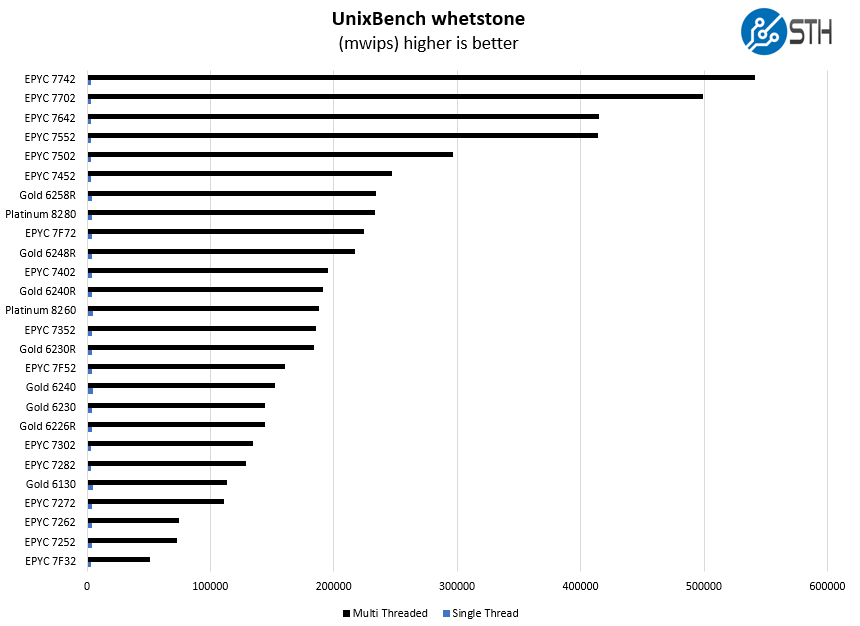
In terms of price parity, the AMD EPYC 7452 is the closer SKU albeit at about 10% less per processor. The EPYC 7452 has 32 cores at lower clock speeds and lower TDP. On a performance per core basis, the Gold 6240R is better since the EPYC 7452 has around 33% more cores but only provides around 27% better performance. Of course, this is at a lower cost and even 27% better performance allows for very tangible consolidation benefits if one is not as concerned about per-core licensing.
Chess Benchmarking
Chess is an interesting use case since it has almost unlimited complexity. Over the years, we have received a number of requests to bring back chess benchmarking. We have been profiling systems and now use the results in our mainstream reviews:
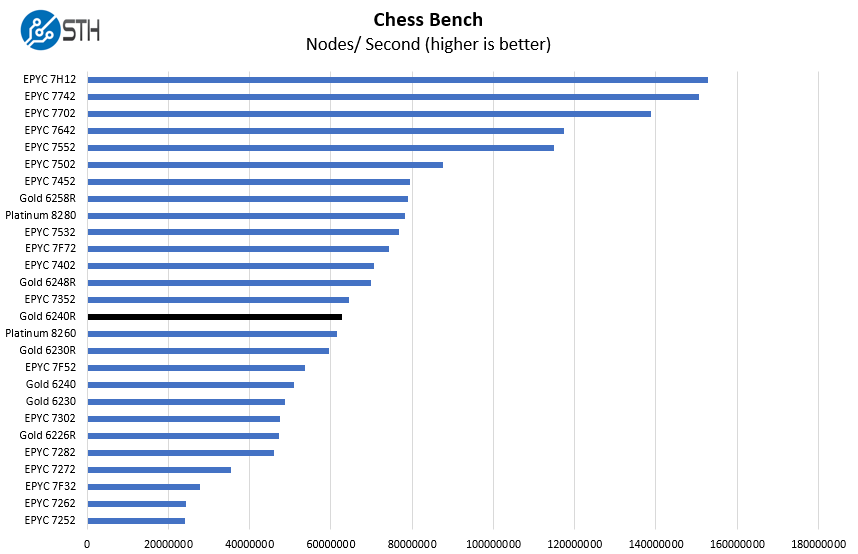
For some additional context, the Intel Xeon Gold 6248R is a higher clocked 24-core part with more TDP headroom for only $700 more. If one is concerned about per-core performance, the Gold 6248R makes more sense. We are also going to mention here that AMD has 24-core parts as well. The AMD EPYC 7402 has 24-cores like the Gold 6240R but has a $1,783 list price or a 19% lower list price than the Xeon. At the original $2445 this was a 27% delta. It makes sense why this SKU saw a quick list price cut since the EPYC 7402 offering more performance, with the same core count, and what would have been at a 27% discount would have made the Xeon Gold 6240R less attractive. Even a 19% discount for less performance from the same core count seems a bit hard to justify, but it is better.
STH STFB KVM Virtualization Testing
One of the other workloads we wanted to share is from one of our DemoEval customers. We have permission to publish the results, but the application itself being tested is closed source. This is a KVM virtualization-based workload where our client is testing how many VMs it can have online at a given time while completing work under the target SLA. Each VM is a self-contained worker.
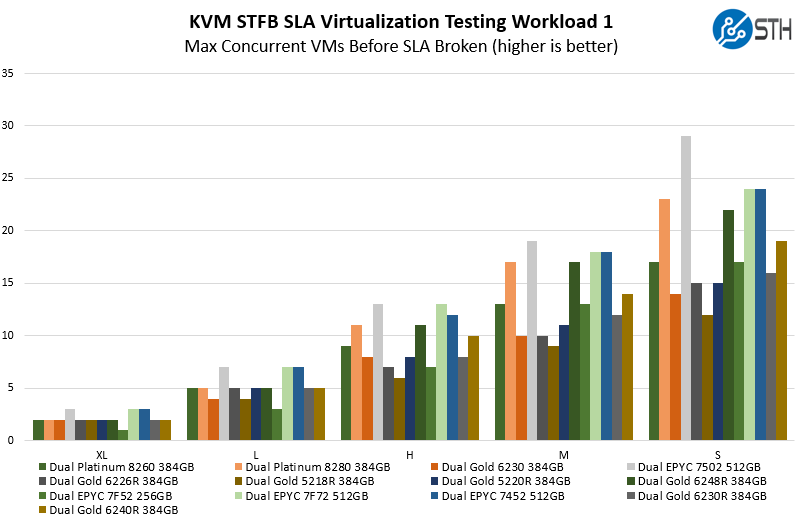
At this point, we generally know how this type of solution will perform. There is a nice uplift over the Xeon Gold 5218R here.
SPECrate2017_int_base
The last benchmark we wanted to look at is SPECrate2017_int_base performance. Specifically, we wanted to show the difference between what we get with Intel Xeon icc and AMD EPYC AOCC results. Server vendors get better results than we do, but this gives you an idea of where we are at in terms of what we have seen:
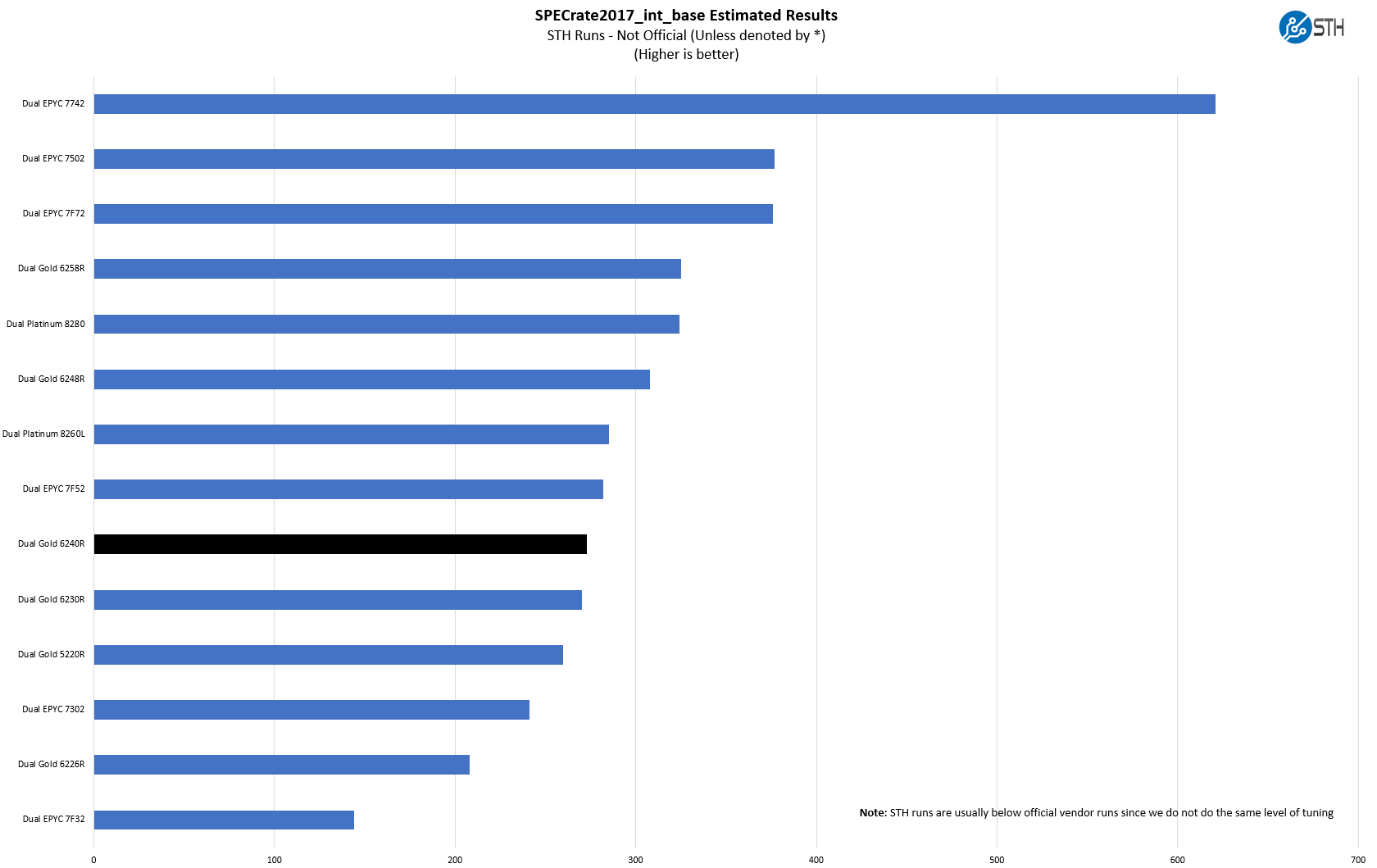
We received some comments noting we were a bit behind vendor results for some of our other tests, a fact that we noted in those reviews. Here we wanted to show both what we measured, and what server OEMs are measuring comparing the two chips. If the actual values are important for your RFP, then we suggest looking at the published results for the server(s) you are evaluating.
Here we see a fairly typical pattern. We pulled out some of our results and just left the AMD EPYC 7742 results here. While the EPYC 7H12 is faster, we wanted to just demonstrate the top end of a 225W TDP CPU which is what we are going to see as the top-end for many mainstream sockets.
Next, we are going to get into the “so what” and discuss market positioning for the processor before giving our final words.




At least someone is being honest. Thanks John. It’s nice not reading crazy fluffs.
I don’t know, green looks pretty sus to me…
Dear Patrick,
I recently read intel divested their infiniband competitor to a enthusiastic new owner and I still cannot ever remember what it’s called from the first pressers till today and I’m going back of random imaginary network company show booths banging my drum about Cray Slingshot “take my money “ is the only thing my deranged avatar demands.
Also Fungible needs one expansion slot for my P4 accelerator in which they only need to offer their own cards so long as I get a good quantity of hard cores for P4 ASTs and FORTH like variable registers and optional hard core chessboards (my conception of a nobody in this domain it merely helps me remember the freedom of movement in chess is a good principle for FPGA resource allocation… incidentally I’m convinced that this field is being taught very badly I mean actively contributing to failures in the industry almost as if a spiteful or afraid market participant had been able to infuse all of academia and the entire FPGA world with sabotaging subtle misunderstandings
I believe you are thinking of (formerly) Intel Omni-Path.